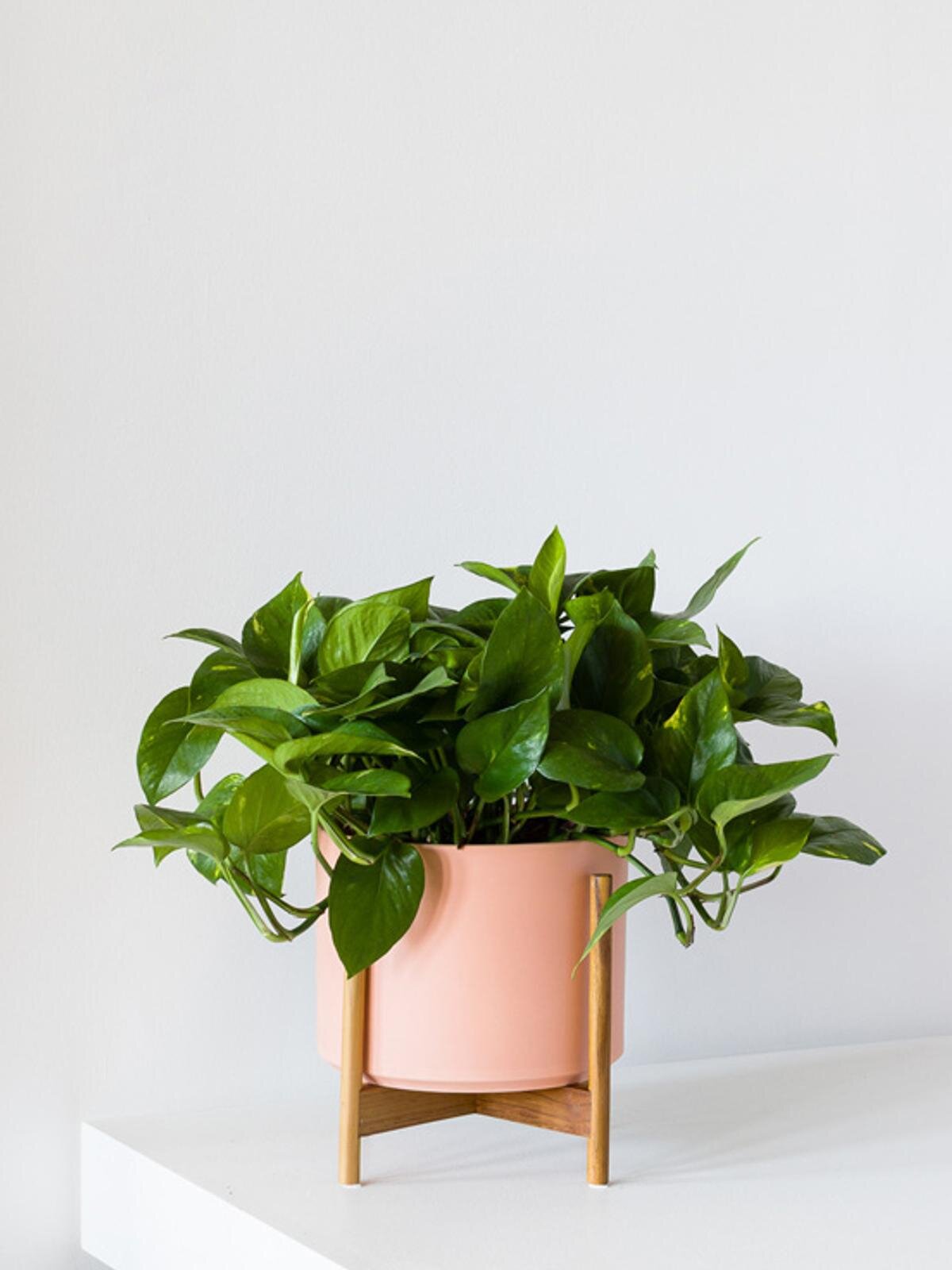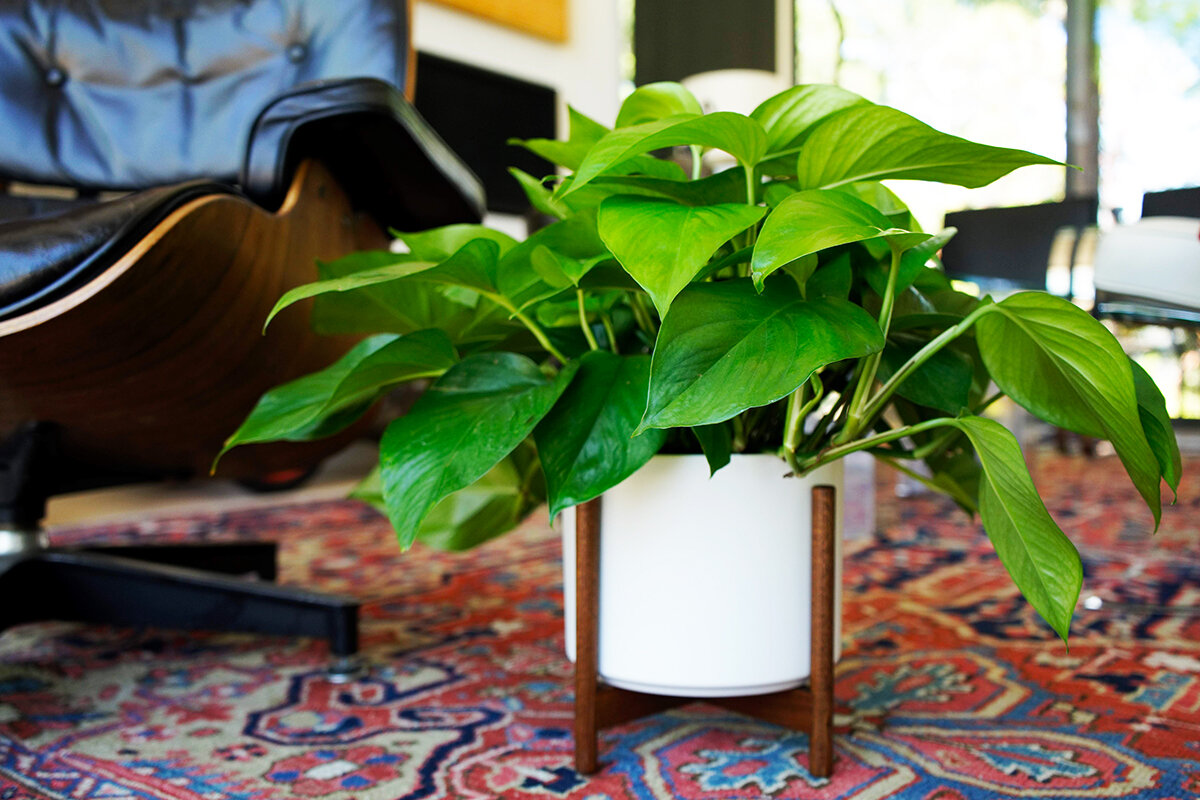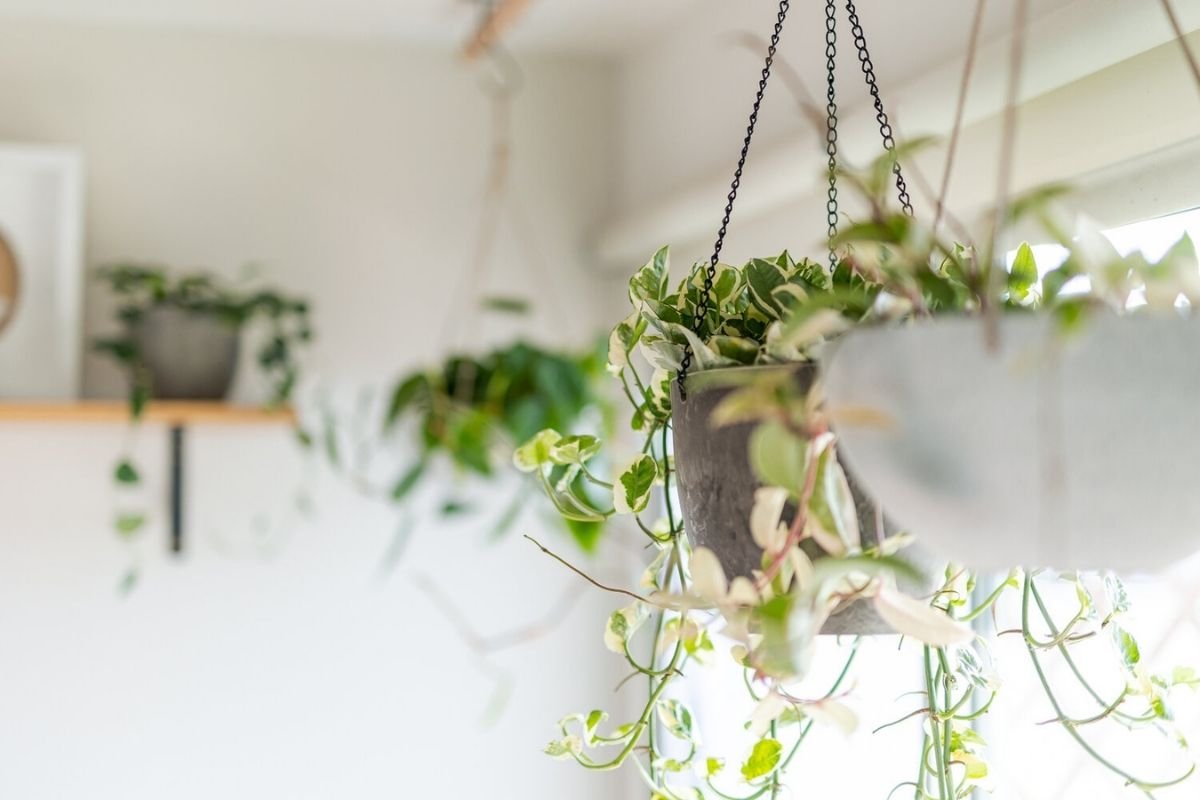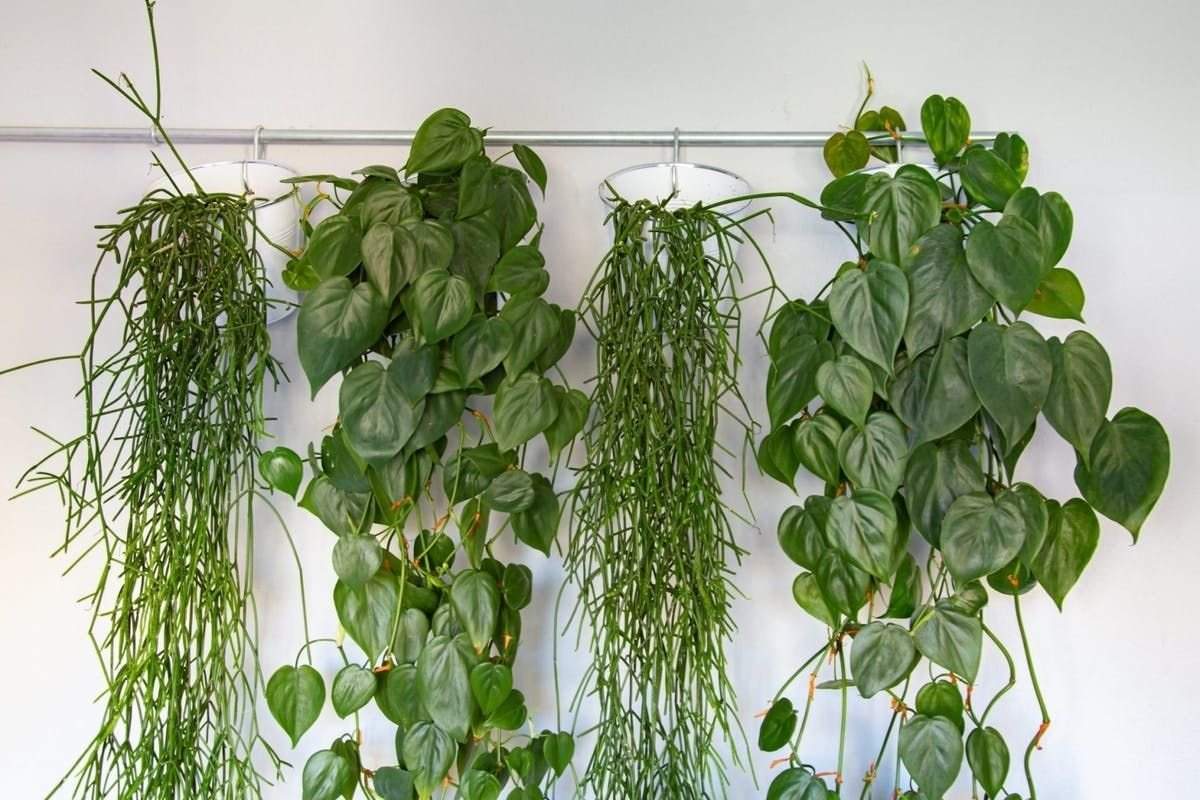The Cascading Pothos, also known as simply Pothos or Devil’s Ivy, is one of the easiest plants out there to care for, and a great plant for beginners. Learn the basics of Pothos plant care including light requirements, watering frequency, and how to troubleshoot common problems you may encounter along the way.
How much light does a Pothos need?
Pothos prefer bright indirect light, though they can easily survive in low-light environments. Keep your plant out of harsh direct sunlight as their leaves will quickly burn.
How to water your Pothos
Let your plant dry out between waterings. Water thoroughly when topsoil is dry, usually once a week.
Avoid overwatering, and note that your watering schedule may be less frequent during winter months or if the plant is getting little light.
How fast does a Pothos grow?
In prime conditions, the Pothos is an incredibly fast grower and its tendrils can grow over 10 feet long! Fertilize your plant 1-2 times per month in the spring and summer with indoor plant food, or foliar feed year round.
Pothos leaves turning yellow
Are your Pothos’ leaves yellow? Pothos have many leaves and if it’s just one or two and the rest of the plant looks healthy, most likely those leaves are just on their way out. You should be able to easily pluck them off. This is totally normal and nothing to worry about!
If you notice many yellow leaves on your Pothos, it could be a sign of overwatering. Check the soil and make sure it dries out before watering again.
Pothos leaves wilting or drooping
If your Pothos looks droopy or the leaves are wilting, most likely your plant is under-watered. This is easy to check by simply touching the soil, or checking the weight of the plant (lift it up— does it feel very light? If so, it needs a good drink!). Sometimes Pothos become so dry that when you water it, the water just drains right through. If this seems to be the case, let your plant sit in water for a few hours (no more than one day) to drink as much as it needs from the bottom up.
RESTORATIVE PLANT CARE ESSENTIALS
Keep your (plant’s) medicine cabinet fully stocked. Our complete set of natural vitamins and pest solutions is the ultimate curative remedy for plants undergoing stress due to common ailments such as fungus or infestation.
Shop the Cascading Pothos at leonandgeorge.com
How to maintain a beautiful and healthy Pothos
Take care of your Pothos and it will take care of you! Below are simple tips to continue caring for your Pothos over time.
Pruning your pothos - Remove yellow leaves all year round, and prune often if you’d like a fuller, bushier look. Simply cut the tendrils just below the node.
Cleaning your pothos - With so much foliage, the Pothos can be annoying to clean! Mist regularly to keep dust off, and once ever few months use a damp cloth to clean each leaf and reveal a healthy shine (also helps the plant soak in more light!).
Repotting your pothos - Houseplants grow much slower than they would in the wild. Depending on the size of your plant and the density of the roots, this is nice to do every 2-3 years to provide fresh nutrients and encourage new growth.
When to repot - Pothos are incredibly hardy plants and can live in the same pot for years. If you want your Pothos to grow very large, repot every 2-3 years.
Pot sizing - if you want your plant to grow bushier, find a nursery pot that’s 2” in diameter larger than the current pot. If you want your plant to stay the same height, you can reuse the same pot and simply change the soil.
Get your hands dirty - spread out newspaper on the floor, remove the plant from the pot and shake off as much of the old soil as possible so that you have clean roots. Place the plant in the center of the pot, add new soil and pat down firmly. Water the soil thoroughly and place the plant in an area with bright indirect light. Your plant will take 2-4 weeks to settle from the shock and adjust to its new home.
Staking your pothos - Some Pothos owners like to stake their plant to encourage vertical growth. You can do this by simply inserting a moss totem and attaching the stems of the plant to it with prongs.
Shop the Cascading Pothos at leonandgeorge.com
How to propagate a Pothos
Whether you want to recycle your Pothos cuttings after pruning or you simply want to create a new plant, know that the Pothos, thanks to its aerial roots, is one of the easiest plants to propagate. Though there are many ways to do this, water propagation is generally the easiest way to go about it. Follow these instructions to propagate your Pothos:
Select a stem to propagate - Using a clean blade, cut an inch or two below an aerial root. You don’t have to propagate with an aerial root, but this is a guaranteed way of propagation success!
Place in water - Find a clear glass and fill with water. Make sure only the stem is submerged, and no leaves are sitting in the water.
Place in a bright area and wait! - Avoid any direct sun. It usually takes just a week or so for the root to start growing.
Transfer to soil - After a couple weeks, transfer to indoor potting soil. A small pot is best — no larger than 6” in diameter.
Keep hydrated - During the first few weeks, or until your plant feels firmly rooted in its soil, regularly water and drain your new Pothos. The soil should be just barely moist to the touch at all times until the plant is thoroughly rooted in the soil, at which point you can water every time the soil dries out.
Illustrations by our talented plant stylist, Kailie Barnes.
Cascading Pothos
A popular, attractive, and truly easy-care plant, the Cascading Pothos has smooth and leathery heart-shaped leaves and is adaptable to virtually any environment.















